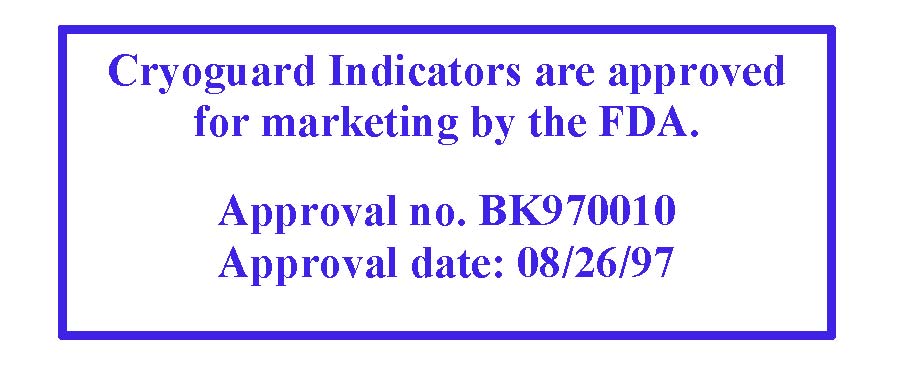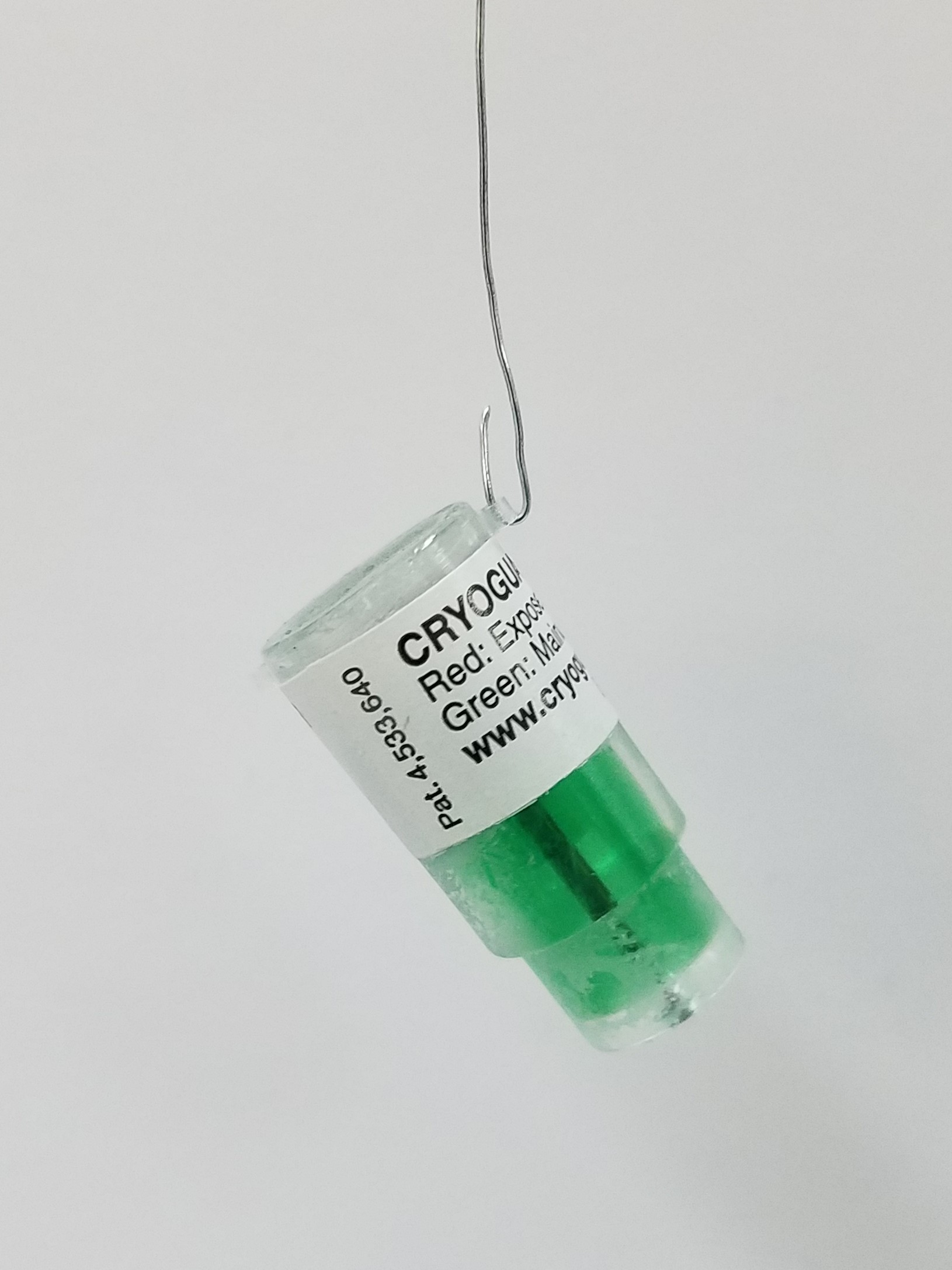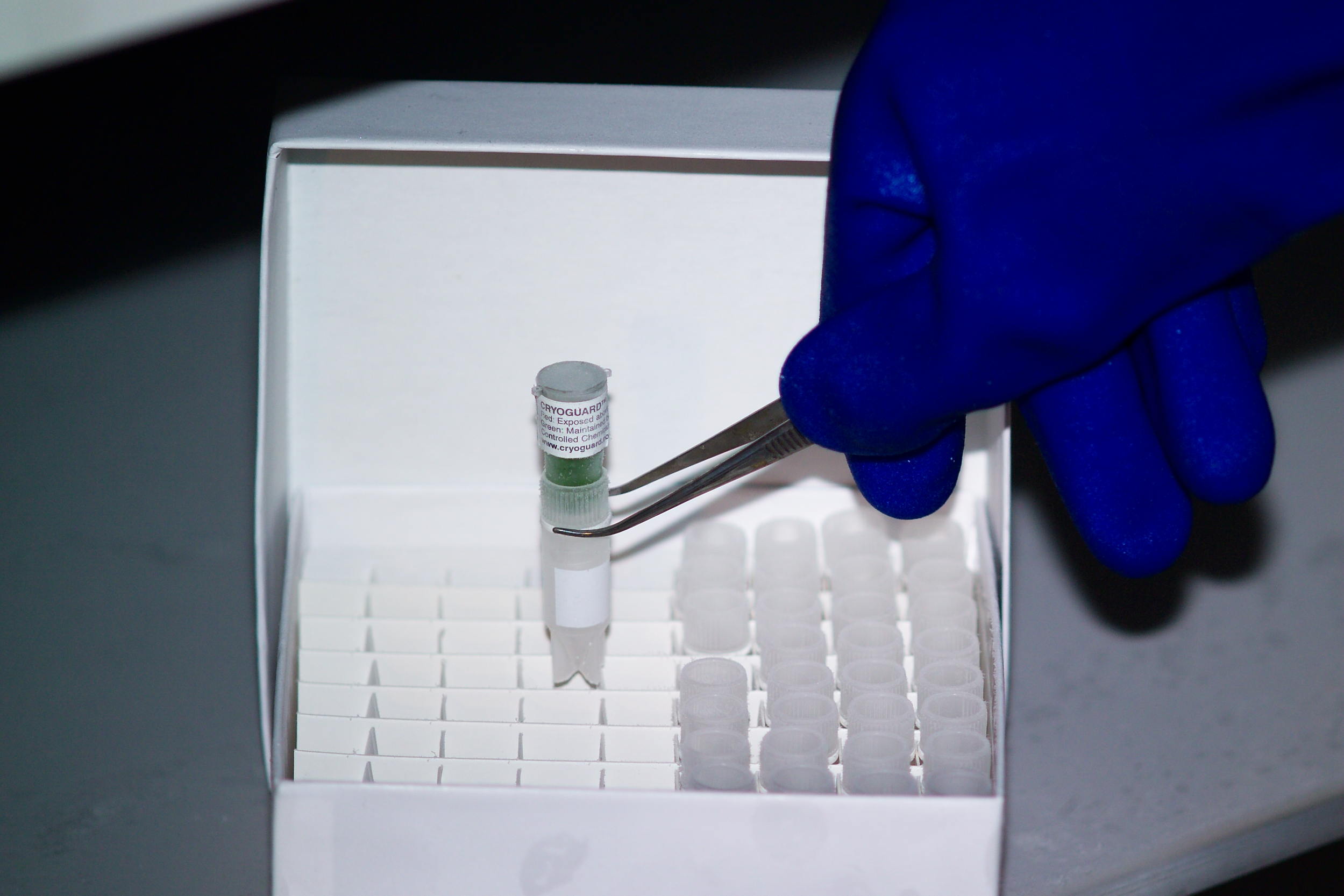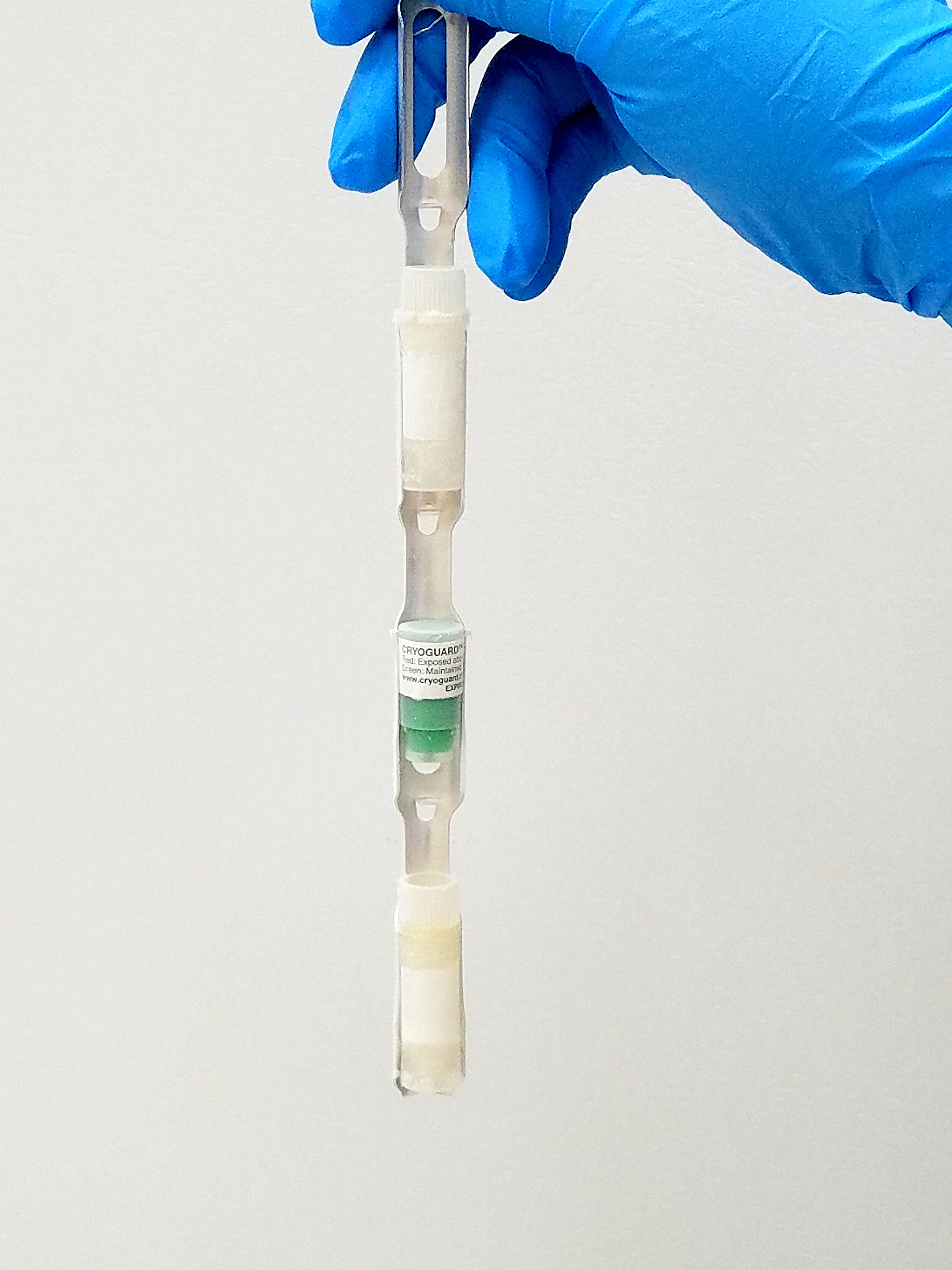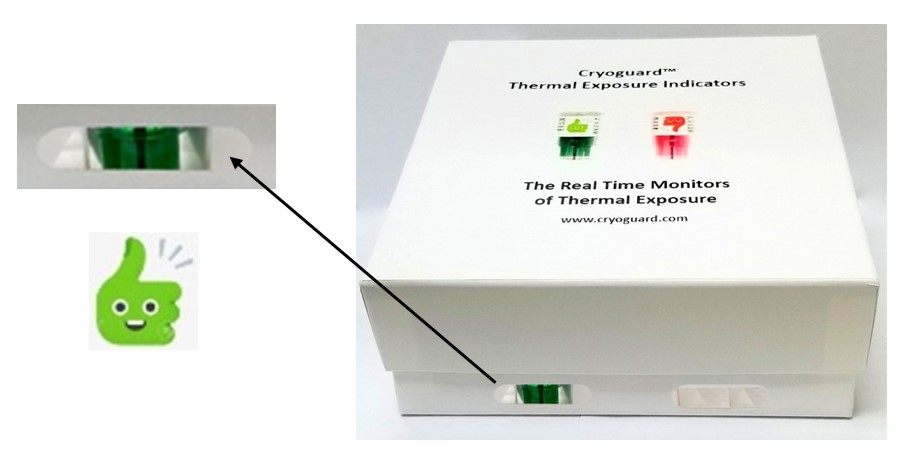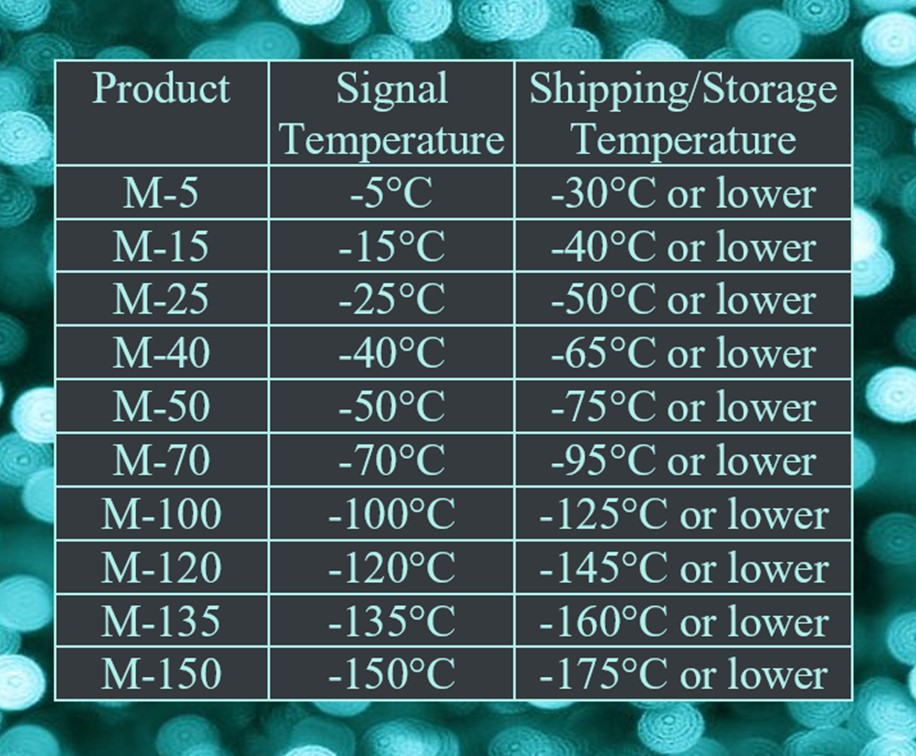 Loading... Please wait...
Loading... Please wait...Our Newsletter
Key Information
Cryoguard™ indicators signal thermal exposure with a green to red color change at preset signal temperatures between -5°C and -150°C. A green indicator tells you in a single glance that the monitored material has not suffered potentially damaging thermal exposure and is safe to use.
A green indicator means that the monitored material is safe to use.
The indicators are ideal for monitoring heat sensitive material during storage, transport, and routine handling by laboratory personnel and customs inspectors. Cryoguard indicators eliminate guesswork and save valuable resources in determining whether heat sensitive materials have been compromised by too warm an environment.
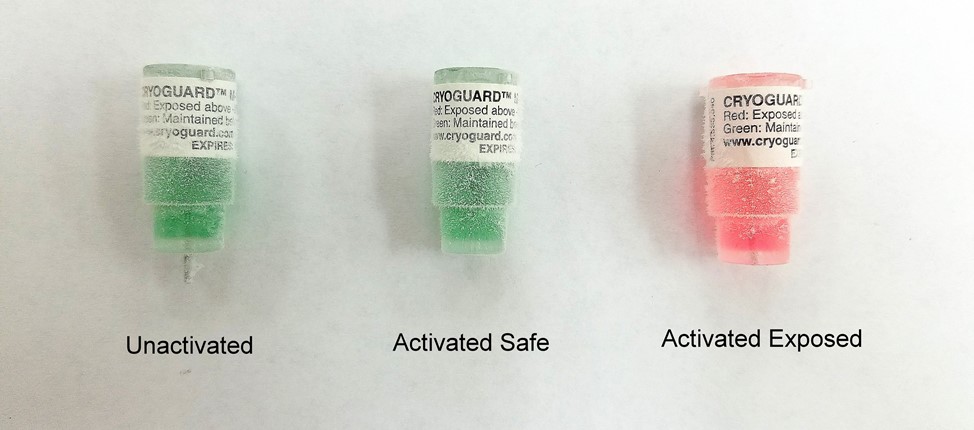
A completely green indicator means that the material in the vicinity of the indicator experienced no damaging thermal exposure. The relationship between indicator color and thermal exposure is provided on each models' information page.
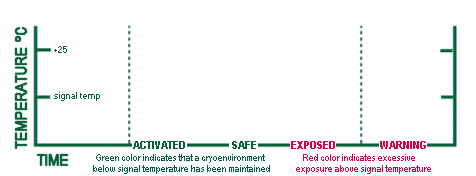
Cryoguard LLC currently offers six indicator models, each with a different signal temperature. Each model signals against thermal exposure to temperatures at or above its signal threshold, as shown in the chart below.
A Cryoguard indicator remains green at 25°C below its signal temperature and changes color within one to two hours at its signal temperature. At 10°C to 15°C above its signal temperature, the indicator changes color within minutes.
Indicators may be stored at room temperature or frozen until use. Each indicator must be activated after freezing in the recommended environment and immediately refrozen prior to use (directions and all activation conditions can be found in Table 1 on the bottom of the Activation Guide). Subsequent to activation, the indicator responds to its thermal environment by remaining green or changing color to red.
Cryoguard indicators have a shelf life of eight months whether activated or not and are labeled with an expiration date.
Why choose Cryoguard indicators?
- Unambiguous signal
Green means the monitored material is safe to use.
Red means that the monitored material may have suffered potentially damaging thermal exposure.
- Hassle-free real-time readout
Cryoguard indicators immediately provide thermal exposure information at a single glance - eliminating the need for data processing and the return of data loggers.
- Versatile storage and coolant compatibility
Indicator formulations are housed in cylindrical plastic vials that are ~½” in diameter and ~1” long.
- Are compatible with storage in liquid nitrogen, nitrogen vapor and dry ice
- Are great for foam coolers
- Fit inside freezer storage box ½” partitions
- Can be easily viewed in and be purchased with our custom Cryoguard Freezer Boxes
- Fit inside the lid of most cryovials
- Snap into standard freezer canes for use in dewars or dry shippers
- Contain eyelets for wiring to materials
Just one indicator in a freezer box can verify when the indicator is green that none of the samples in the box were thermally damaged during removal from the freezer. Additionally, the indicator enables you to identify which freezer boxes contain samples that can be salvaged after power failures and depletion of coolant.
Use of Cryoguard Thermal Exposure Indicators might have reduced the heart-breaking loss of frozen eggs caused by depletion of liquid nitrogen coolant at the Ahuja Medical Center Fertility Center in Cleveland and at the San Francisco Fertility Center - had these centers been using Cryoguard™ Thermal Exposure Indicators in freezer boxes to identify and salvage specimens that escaped potentially damaging thermal exposure.
- Broad range of applications
Cryoguard indicators are used to ensure the proper handling of a broad range of materials including:
- Cord blood, bone marrow, and peripheral blood stem cells
- Sperm, embryos, and vitrified oocytes
- Bone grafts, heart valves, and testicular tissue
- Vaccines and cell therapy products
- Premixed epoxy resins and polysulfide sealants
- Heat-sensitive electronics
- Used worldwide
Leading hospitals, fertility clinics, stem cell labs, universities, and aerospace companies – among others – rely on Cryoguard indicators to ensure proper material handling by customs inspectors, laboratory personnel, and distributors.
- Quality-assured
Several indicators in each batch are tested in a Model 7450 CryoMed Controlled Rate Freezer using NIST calibrated thermocouple thermometers to verify that the indicators in each batch perform as specified on each indicator model's product page.
